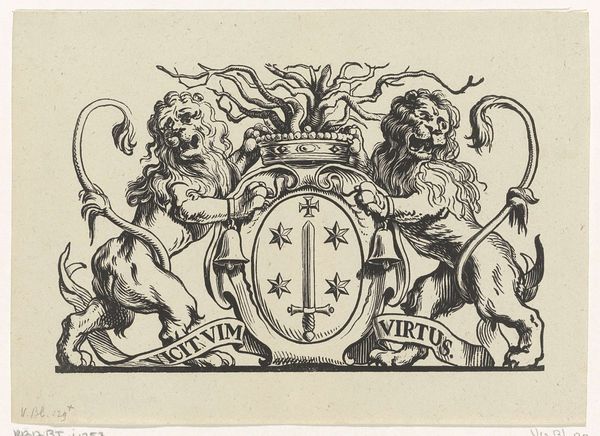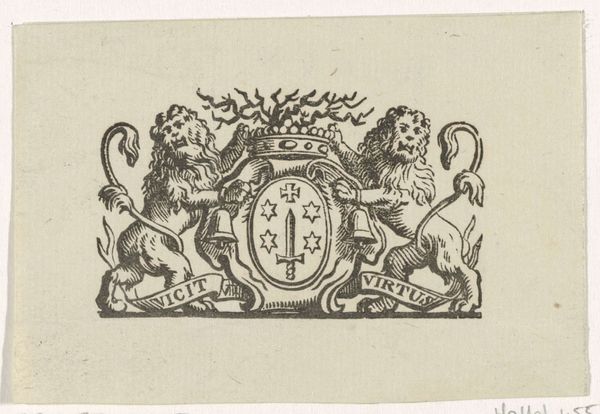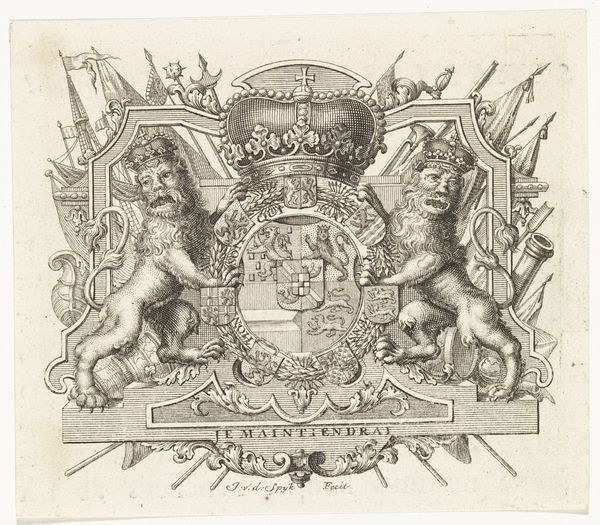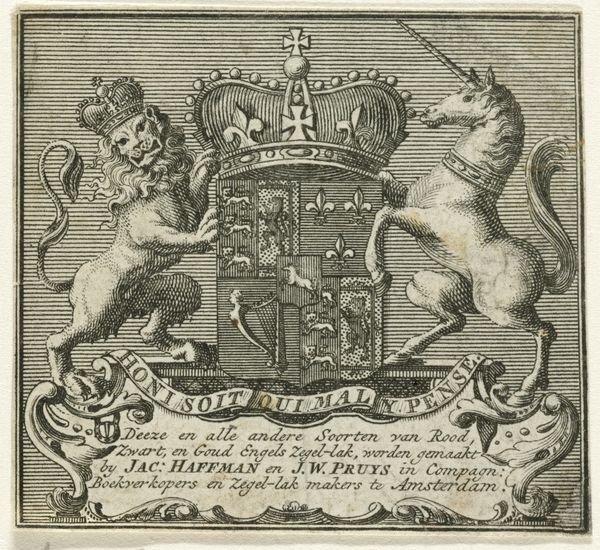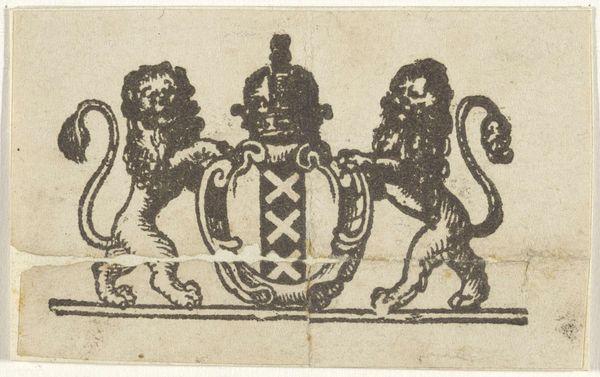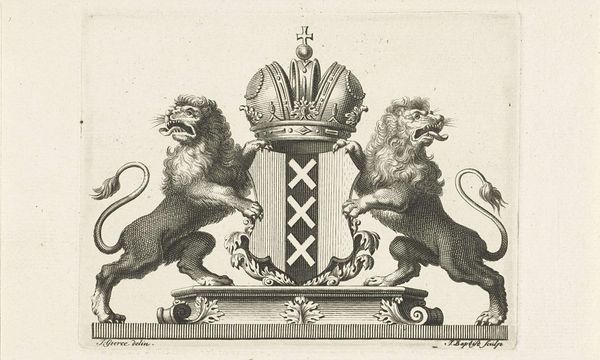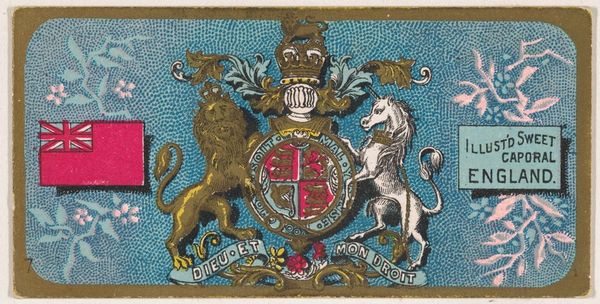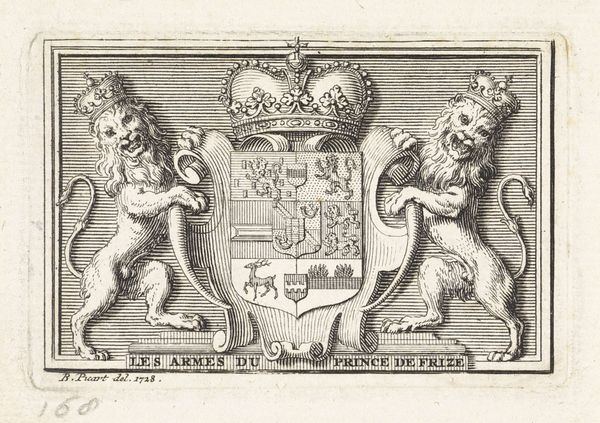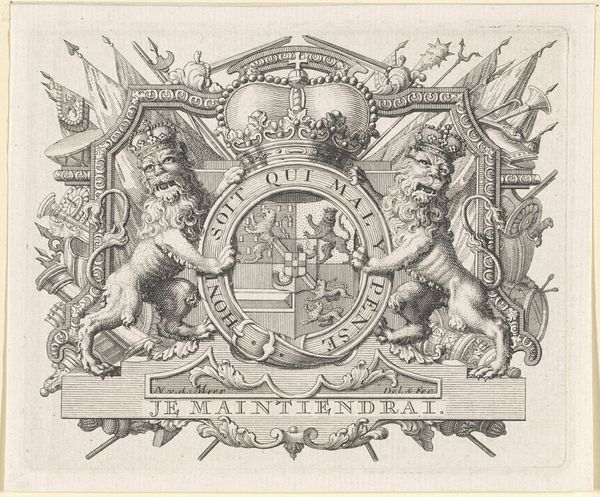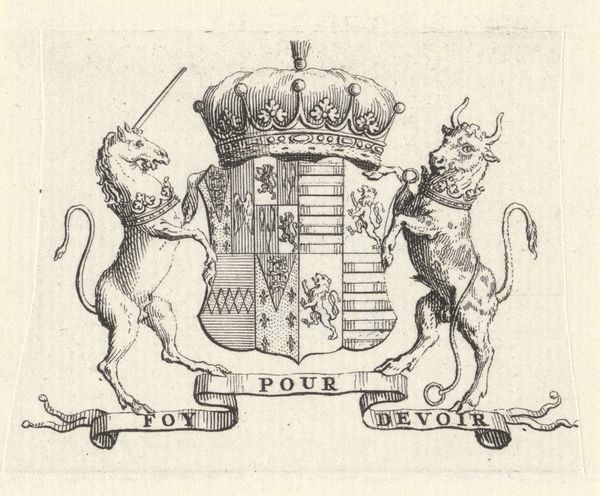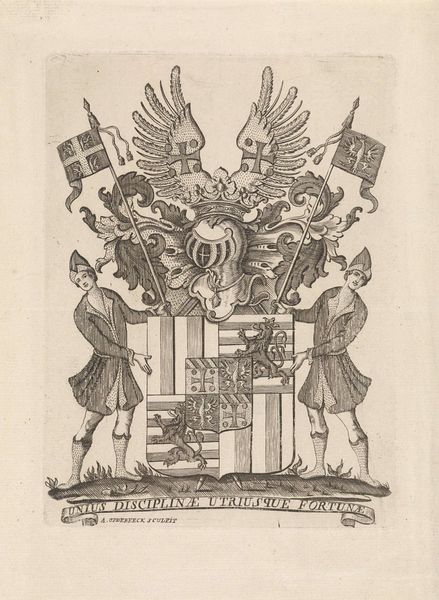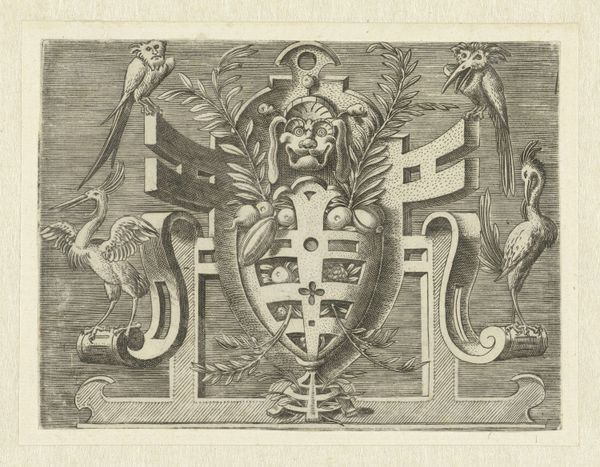
Dimensions: height 60.5 cm, width 73.0 cm
Copyright: Rijks Museum: Open Domain
Editor: This textile piece, titled "Cushion Cover with the Coat of Arms of Gouda", was woven in 1788, attributed to Jacob van der Borcht II. The detail is amazing. What really strikes me is the almost playful heraldry. What stands out to you? Curator: I see a fascinating interplay of power and pride, meticulously woven into this heraldic tapestry. The lions, traditional symbols of courage and nobility, support the Gouda coat of arms, bristling with symbolic charge. But notice how the banner reads "Jan Bouwens" instead of a family crest. Why would that name be commemorated like this? Editor: Perhaps a gift? A commemoration? The weaving would be an extremely durable symbolic family ‘portrait.' Curator: Exactly. These images carry a weight that extends beyond mere decoration. The coat of arms speaks to Gouda's civic identity. How much cultural weight do we assign to family names? Bouwens' name being displayed is something akin to cultural permanence through the object’s physical durability. Editor: So, weaving a name onto a coat of arms could elevate someone, tying them into Gouda’s history? Curator: Precisely. Consider also how textiles communicate domestic values—comfort, family, heritage. Blazoning Jan Bouwens within this framework grants him, and potentially his lineage, symbolic, lasting status. What do you think future viewers would make of this image? Editor: It would be fascinating to study similar family commemorations and see the impact on self-image. Thank you for showing the symbolism that creates our collective past. Curator: My pleasure. These emblems resonate with us, consciously or unconsciously, long after their creation, subtly shaping our perceptions and cultural memory.
Comments
No comments
Be the first to comment and join the conversation on the ultimate creative platform.
